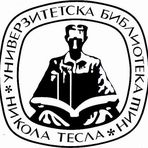Title
Razvoj numeričkog i analitičkog modela inovativnog čeličnog disipatora seizmičke energije
Creator
Zorić, Andrija, 1990-
CONOR:
64428297
Copyright date
2022
Object Links
Select license
Autorstvo-Nekomercijalno-Bez prerade 3.0 Srbija (CC BY-NC-ND 3.0)
License description
Dozvoljavate samo preuzimanje i distribuciju dela, ako/dok se pravilno naznačava ime autora, bez ikakvih promena dela i bez prava komercijalnog korišćenja dela. Ova licenca je najstroža CC licenca. Osnovni opis Licence: http://creativecommons.org/licenses/by-nc-nd/3.0/rs/deed.sr_LATN. Sadržaj ugovora u celini: http://creativecommons.org/licenses/by-nc-nd/3.0/rs/legalcode.sr-Latn
Language
Serbian
Cobiss-ID
Theses Type
Doktorska disertacija
description
Datum odbrane: 19.01.2023.
Other responsibilities
član komisije
Đorić, Stanko
Academic Expertise
Prirodno-matematičke nauke
Academic Title
-
University
Univerzitet u Nišu
Faculty
Građevinsko-arhitektonski fakultet
Group
Katedra za materijale i konstrukcije
Alternative title
Development of numerical and analytical model of an innovative steel dissipator of seismic energy
Publisher
[А. З. Зорић]
Format
288 листова
description
Биографија аутора са сликом: лист 288,
Библиографија: лист. 251-278.
description
Earthquake engineering
Abstract (en)
Performance of an innovative steel dissipator of seismic energy applied
in the passive vibration control system of buildings has been analysed in
the dissertation. When determining the performance, the geometric
characteristics of the energy dissipator and the physical and mechanical
characteristics of the steel material have been varied. The analyses were
performed on the sophisticated numerical computational models
developed using the Finite Element Method. The numerical model was
validated against the available experimental test results of the energy
dissipator components. It has been proven that the innovative steel
dissipator of seismic energy has significant nonlinear hysteretic
performance, whereby it is possible to achieve significant seismic energy
dissipation. Based on the analyses, conclusions were drawn regarding the
influence of the geometric and material parameters on the performance
of energy dissipator and recommendations for its application in
engineering practice were given. In order to obtain the response of energy
dissipator to monotonically increasing load an analytical model was
developed. This model is also used to define the parameters for describing
the idealized response to monotonically increasing as well as to cyclic
loading, which is the starting point in the analysis of seismically isolated
buildings using the proposed energy dissipator. Using the example of an
isolated structure, with the direct dynamic analysis in time domain, the
efficiency of energy dissipator was confirmed in terms of reducing
seismic forces and relative interstorey drift ratio during real and artificial
earthquakes accelerogram in relation to the case of rigid foundation of the
structure.
Authors Key words
čelični disipator energije, pasivna kontrola vibracija,
histerezisno ponašanje, ciklično opterećenje, eksperimentalno
ispitivanje, metod konačnih elemenata
Authors Key words
steel damper, passive vibration control, hysteresis behaviour, cyclic load,
experimental test, finite element method
Classification
624.042.7(043.3)
699.841(043.3)
519.673(043.3)
Subject
Т 220
Type
Tekst
Abstract (en)
Performance of an innovative steel dissipator of seismic energy applied
in the passive vibration control system of buildings has been analysed in
the dissertation. When determining the performance, the geometric
characteristics of the energy dissipator and the physical and mechanical
characteristics of the steel material have been varied. The analyses were
performed on the sophisticated numerical computational models
developed using the Finite Element Method. The numerical model was
validated against the available experimental test results of the energy
dissipator components. It has been proven that the innovative steel
dissipator of seismic energy has significant nonlinear hysteretic
performance, whereby it is possible to achieve significant seismic energy
dissipation. Based on the analyses, conclusions were drawn regarding the
influence of the geometric and material parameters on the performance
of energy dissipator and recommendations for its application in
engineering practice were given. In order to obtain the response of energy
dissipator to monotonically increasing load an analytical model was
developed. This model is also used to define the parameters for describing
the idealized response to monotonically increasing as well as to cyclic
loading, which is the starting point in the analysis of seismically isolated
buildings using the proposed energy dissipator. Using the example of an
isolated structure, with the direct dynamic analysis in time domain, the
efficiency of energy dissipator was confirmed in terms of reducing
seismic forces and relative interstorey drift ratio during real and artificial
earthquakes accelerogram in relation to the case of rigid foundation of the
structure.
“Data exchange” service offers individual users metadata transfer in several different formats. Citation formats are offered for transfers in texts as for the transfer into internet pages. Citation formats include permanent links that guarantee access to cited sources. For use are commonly structured metadata schemes : Dublin Core xml and ETUB-MS xml, local adaptation of international ETD-MS scheme intended for use in academic documents.


